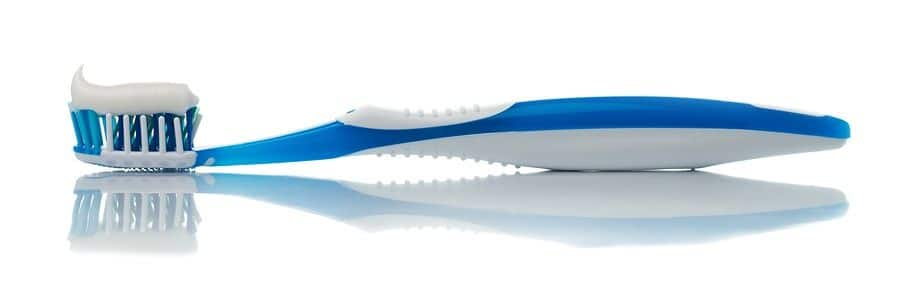[Estimated read time: 5 minutes]
Toothbrushes are well known today as being an essential tool for keeping our mouth and teeth healthy. Many of us think of toothbrushes as a modern invention, but toothbrushes and similar oral health devices have been around since ancient times. Toothbrushes have seen many changes before reaching the brightly colored dental cleaning device they are today. Let’s take a look back and explore how the toothbrush has evolved across the centuries and throughout the world.
Ancient Egyptians and Chewing Sticks
Ancient Egyptians are responsible for many creations, though many people don’t know about their unique method of keeping their mouths clean: Chewing sticks.
These sticks are the grandfathers of modern toothbrushes. Chewing sticks feature a side that can be used as a toothpick while the other side has a frayed end that is used to brush teeth.
The earliest instance of these chew sticks can be found in Egyptian tombs, which the Egyptians used alongside ground pumice and vinegar to achieve a whiter smile. Unfortunately, the combination of pumice and vinegar was often a recipe for extensive dental damage.
Chew sticks are still somewhat common in certain areas of Africa to this day. They’re an eco-friendly alternative from a tree called Salvadora persica also known as Miswak, which prevents tooth decay and gum disease without the need for toothpaste. This is highly beneficial for those in the area who lack the resources and access for proper dental care.
While the use of ground pumice and vinegar didn’t catch on, it did lay the groundwork for future generations to use as the basis for toothbrushes.
Toothbrushes From China to Europe
While chewing sticks provided a clean mouth, nothing can compare to the modern bristle toothbrush. The closest to this would be a toothbrush made of bamboo or bone with hog hair bristles that were common during the Tang Dynasty in China.
This use of animal bone as the handle was one that would be used for many years and one that many in the era found as a reliable resource.
Travelers then brought this toothbrush to Europe during the 17th century, where it slowly gained popularity.
Unlike modern, soft bristles, hog hairs are a tad too firm, so horse hairs were also used. Due to the high-value horses had during this time, most toothbrushes were still made with hog hairs.
Despite this innovation, most of Europe still did not practice regular brushing. They instead relied on a Greek Method which involved rubbing your teeth with a linen cloth on a stick that has been dipped in salt and sulfur oils.
1st Mass Produced Toothbrush
Using animal bone as a handle alongside fur resulted in a simple, but effective, method for dental care. After this unique device had spread alongside the European area, it resulted in many mass-produced toothbrush companies popping up.
The first well-known mass-produced toothbrush was created by William Addis. He came up with the idea after being jailed during a riot.
At the time, he only had a rag with salt and soot to clean his teeth (the aforementioned Greek method), so he decided to save an animal bone to remedy that. By drilling small holes inside of it and obtaining some bristles from guards, he sealed the creation with some glue and made the toothbrush.
Once released from jail, he started a business called Wisdom Toothbrushes. Wisdom produced toothbrushes at a large scale and was quite profitable. This stroke of luck resulted in Addis becoming the first among many to start production and set the wheels of modern dental care in motion.
By that time, there was mass production of toothbrushes in England, France, Germany, and Japan. Cheaper options in these areas were designed with pig bristle and more expensive ones used softer badger hair.
Modern Day Toothbrushes
Despite the advancements, animal bristle still retained bacteria and didn’t dry very well. Also, the bristles often fell out. This could cause issues down the line and result in the need for cosmetic dentistry.
Nylon was later used as a replacement. Made by Du Pont in 1938, nylon was quickly utilized as a replacement and saw great success upon its release.
During wartime, animal bones were needed for soup. As a result, a better alternative had to be found. This came in the form of celluloid handles. They were a cheap alternative and were easy to manufacture, with plastic molds to shape them and then be mass produced. Celluloid handles began to replace the bone handles in the 1900s and quickly became a popular option for dental care.
Not one to be outdone, nylon bristles were replaced by synthetic fibers in 1938. The result is an easy to manufacture toothbrush that gained traction as the basis for dental care today.
Shortly after, the celluloid found in handles were replaced with thermoplastic materials. These are cheaper and easier to mold and are used frequently to this day by large dental companies such as Colgate and Crest.
There are over 3000 patents for the toothbrush and virtually endless styles and colors, including electric toothbrushes. With this amount of variations, there are toothbrushes that can fit the dental needs of every person.
Electric toothbrushes have now become the pinnacle of oral health care, with a huge variety of options that range from rotating bristles to vibrating heads.
Toothbrushes are only part of what keeps your teeth healthy, read our brief history of toothpaste to find out more about the history of dental care.

